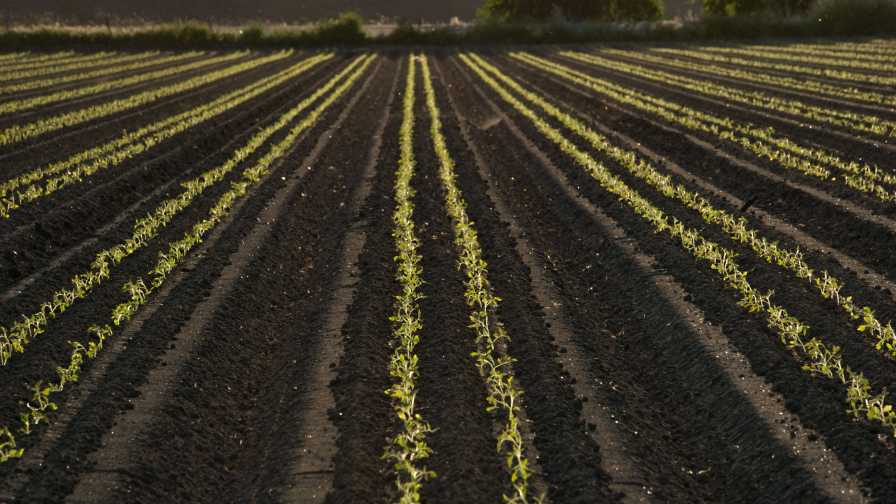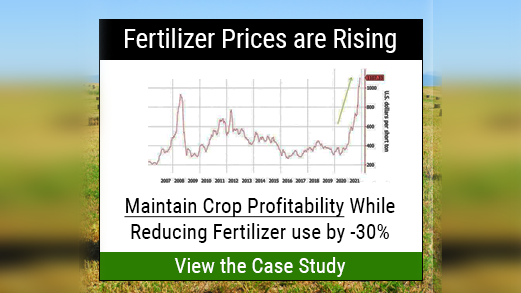Land Grant Experts Talk Irrigation in Northeast Vegetable Crops

Northeast growers are adopting irrigation methods usually associated with Western growers. These tomato plants have underground drip irrigation tubes 10 inches below the surface.
Photo by Lance Cheung on behalf of USDA
Certain farming regions have always been widely known as “irrigation zones” — places where deploying technology to level the playing field against water deficits. Places like Yuma, AZ, and Grand Island, NE.
Yet non-traditional areas are adopting irrigation. Places like the Northeast, where once-ample annual rainfall levels made pivots, sprinklers, and drip tape a non-starter among local farmers. Why? It’s a mix of wanting water sustainability, better quality, and a way to adapt to changing weather.
2016 Drought Spurred Adoption
As usually happens, change followed a disastrous season.
“I can’t speak for other regions, but here in the Northeast I think it goes back to a drought we had in the 2016 season,” Cornell University professor and Horticulture Department Chair Dr. Steve Reiners remembers. “A dry winter continued through the summer and resulted in severe drought and record low water flow for streams in western and central New York. Most counties were declared disaster areas and qualified for financial aid.”
While the 2016 drought could be viewed as an outlier event, Reiners says weather data shows a warming trend that is increasing in the Northeast.
“Just this season we went from cold wet conditions to warm and dry, and growers were already irrigating the first week of June,” Reiners says.
Adopting irrigation has proven a challenge for many growers, Reiners says.
“Many growers who have not moved to trickle are intimidated by what is essentially a radical change in their operation,” Reiners explains. “But I have found that after one season, they embrace it and realize it was not as difficult a change as they imagined. And when they see improvements in yield and quality, they are sold.”
Since a good irrigation system adapts to each field’s micro conditions, Reiners urges growers to consult with irrigation suppliers about what each recommends.
“They can make estimates and recommendations for the farm and come up with a useable plan that can fit your budget,” he says. “Perhaps start small with a focus on the high value crops most receptive to trickle and expand over time. If flow rate is limited, they can help you set up smaller irrigation zones to match flow.”
What to Consider Before Adopting a New System
William “Bill” Lamont Jr., a Professor Emeritus of vegetable crops with Penn State University, sees the ability to slowly feed nutrients to crops as a big boon for growers and a key reason the Northeast is adopting irrigation tech.
The vegetable farmers he works with are increasingly doing mid-season tissue testing to “really refine” fertilization schemes.
Irrigation has always been a must-have in Lamont’s mind. This is nothing new, but rather something the longtime professor has always advocated with growers.
“If you’re going to do vegetables, you’re going to need irrigation. Because during those dry periods you need to be able to irrigate the crop,” he says. “Growers just cannot afford a crop loss anymore, period.”
Labor is another driver enticing growers to add irrigation and automation to their farms, according to Lamont. Which makes sense. The professor’s home state recently enacted a $15 farm worker minimum wage rule.
“I’m just driving back up (to Central PA) from New Jersey now and some of the boys down there were irrigating sandy soils with some big guns,” he says. “That’s probably a less labor-intensive way to do it than paying crews to move those big old aluminum pipes around. You’ve only got so many hours in a day, after all.”
Expect Even More Advanced Tech
Labor shortages are giving rise to what was once unthinkable: high-end technology like robotics.
“At all the land grant colleges, we are seeing a huge push in digital and precision ag that includes robotics,” he explains. “And it goes back to the cost and availability of labor. Automated systems work 24/7 and require no overtime or housing. They are available during pandemics, labor shortages, and other challenges.
“Imagine, in the future, a farm where soil monitors (or even plant monitors) would alert your laptop or phone of
an irrigation need. Automated systems could turn the water on and off, delivering exactly what is needed when it’s needed. No more moving pipes, turning water on and off wasting water, and working all night to irrigate the crops.”
That’s a future that today’s farmer is eager to sign on for, no doubt.
What Growers Want from Irrigation Technology
Following a particularly severe drought across the Northeast back in 2016, Reiners surveyed vegetable growers across the region to find out what they wanted from irrigation technology offerings.
The 2016 drought put irrigation technology squarely in the crosshairs of adoption for Empire State growers. Reiners survey data showed that vegetable yields suffered 53% (western NY) and 39% (eastern NY) in situations where farmers were relying solely on rain for moisture. Those are powerful statistics for any farmer, regardless of crop.
“When growers see these results, they realize they can no longer rely on nature to provide the water they need,” Reiners says.
When it comes to irrigation systems, vegetable growers across the Northeast told Cornell that they wanted more:
- Development of online tools and better long-range forecasting
- On-farm courses and training, and educational materials about agriculture and drought
- Financial assistance to cover drought losses
- Inventory of vacant farmlands for potential use
- Financial assistance for irrigation equipment and ponds, and for soil improvement and water management
- Crop-specific crop insurance or discontinue crop insurance which encourages growing ill-suited crops
- Rentable and leasable irrigation equipment, and cheaper county water for agricultural use
- Cost sharing for: cover crops and no-till supplies, and for multi-purpose ponds










